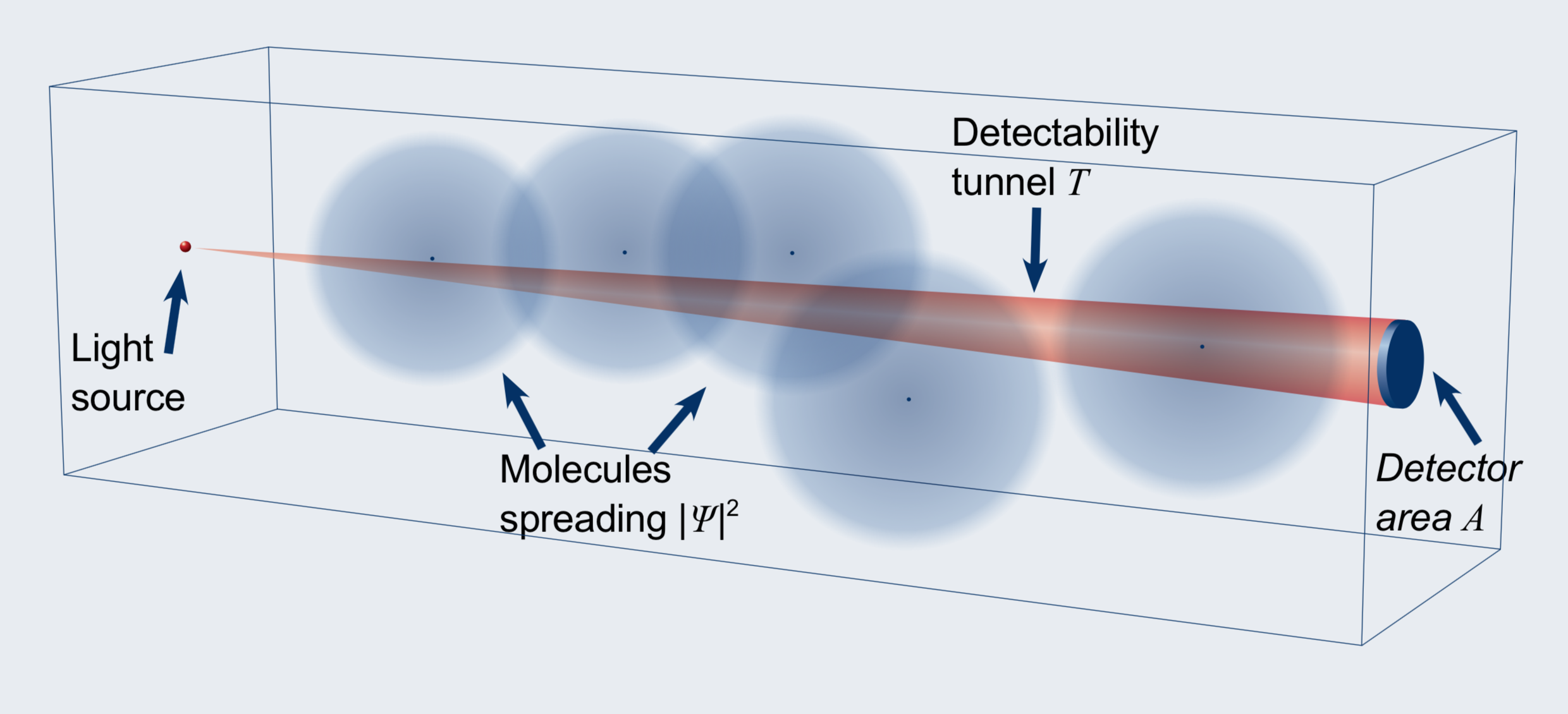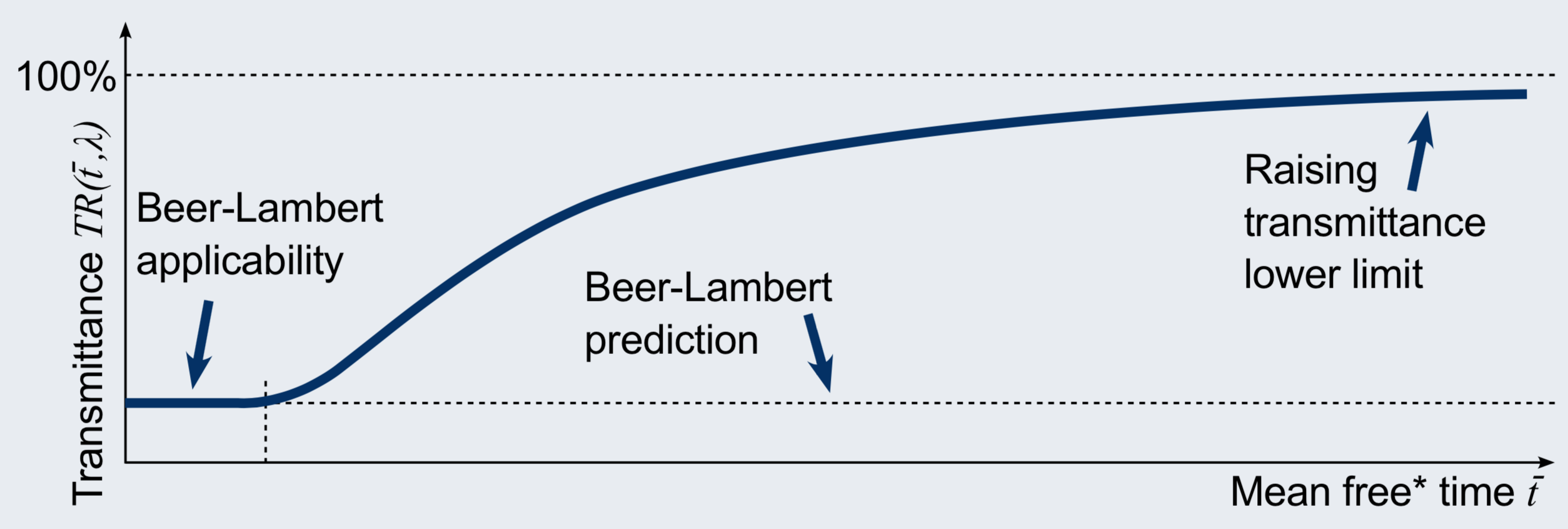The Theory
The full theory is described in the article. The overview presented below is based on the poster prepared for the Cosmic Controversies 2019 conference.

Background
Dark Matter &
non-locality
- It is generally believed that Dark Matter can’t be baryonic gas (H, He) or dust because it would be opaque. This is in accordance with the classic Beer-Lambert law (and it derivatives) that relates gas transmittance to optical path length l, concentration c and molar absorptivity \epsilon(\lambda) only, assuming molecules locality: TR(\lambda)=10^{-lc\varepsilon(\lambda) }
- Increasing number of experiments show non-local matter properties, e.g. quantum entanglement, Bose-Einstein condensate, helium Young’s type double-slit experiment, etc
Hypothesis
New transmittance model is required
- The classic Beer-Lambert law is not applicable to interstellar medium
- We should take into account a solution of the Schrödinger equation for a free particle for each gas molecule for ultra diluted gas
- Wavefunctions spreading & detector size affects optical transmittance measurement
Methods
Non-locality applied for transmittance model

- Model a non relativistic gas molecule as a gaussian wave packet
- A molecule is free between consecutive collisions with either *photon or *molecule: mean free* time \overline{t}
- Molecules’ wavefunctions spread according to the Schrödinger equation for a free particle, it is smeared gas
- Assume a wavelenght dependend cross section \sigma(\lambda) remains constant on spreading, i.e. constant Einstein coefficients
- If a detector area A is smaller than molecule spread, a photon scattering out of detectability tunnel T can’t be observed, probability of possibly observed scattering event reads as:P^{obs}\left ( \overline{t},\lambda \right )=C(\sigma(\lambda), \sigma_A, geometry)\int_T\left | \mathit{\Psi} (\boldsymbol{r}, \overline{t} ) \right |^2dr , where C depends on geometry of actual setup, total cross-section and detector dimensions and efficiency
- Taking N independent molecules, where incident photon may be scattered by any of them, a Markov chain is used for the transmittance equation:TR ( \overline{t},\lambda )=\prod_{n=1}^N\left ( 1-P_n^{obs} ( \overline{t},\lambda ) \right )
- Analytical form of the transmittance lower limit may be presented
Results
Measured gas transmittance may raise to 100%

- Transmittance of smeared gas depends also on a detector size and mean free* time \overline{t}
-
Raising mean free* time \overline{t} leads to raising gas transmittance measured with a small detector:
TR ( \overline{t},\lambda )\geqslant \prod_{n=1}^N\left [ 1- \frac{C(...)}{4} \left ( erf \left( \frac{dist_n-\sqrt{A}}{\sqrt2 stdev(\bar{t})} \right) \newline - erf \left( \frac{dist_n+\sqrt{A}}{\sqrt2 stdev(\bar{t})} \right) \right )^2 \right ]
where \Delta-initial position measurement accuracy, m-molecule mass, dist_n- distance from \left \langle x_n \right \rangle to tunnel T axis and stdev(\bar{t})=\sqrt{\frac12 \left( \Delta^2+\frac{\hbar^2\bar{t}^2}{m^2\Delta^2} \right)} - Transmittance smaller as detector gets bigger
- Interstellar medium transmittance depends on background radiation intensity
- Calculations confirm intragalactic radiation is so weak thay neutral atomic hydrogen (HI) may form smeared gas clouds
- It is shown, the classic Beer-Lambert law is the first-order approximation of the proposed model
Conclusions
Model is falsifiable,
the ideal candidate for Dark matter
- Achieved results interesting for QM measurement & decohorence discussions
- A variety of possible laboratory or orbital experiments for detecting smeared gas are proposed in the paper
- Geocorona may be smeared (H) gas as its observed „density” depends on Earth shadow & Sun activity
- Baryonic (H, He) Dark Matter would be ultra diluted gas, intragalactic radiation is weak enough so clouds of smeared gas may be a component of Dark matter